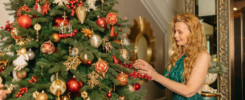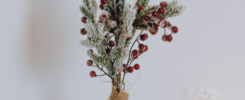Introduction: Celebrate Cherry Blossoms and Christmas with an Artificial Tree
Cherry blossoms are a striking symbol of spring and renewal. In Japan, they have a special meaning as they mark the start of the hanami season, which is the way to celebrate the trees’ bloom. When the season ends, it’s time to prepare for the next big event: Christmas! Both holidays share a common theme of gathering, joy, and decoration. That’s why artificial Christmas trees are now more popular than ever, not just for convenience. But with so many options on the market, finding the one that looks realistic and fits your style can take time and effort. This guide will help you navigate the most important features to consider, brands to know, and trends to follow.
How to Evaluate the Realism of an Artificial Tree
The realism of an artificial tree can make or break your festive mood. Think about it: if the tree looks too fake, you won’t enjoy it as much as you would with a real one. But how can you tell if a tree looks realistic without seeing it in person? Here are a few factors to consider:
1. Branch tips: Look for trees with “PE” or “True Needle” tips as they mimic the texture and color of real pine needles. Avoid trees with flat, plastic-looking tips; they don’t create depth or dimension.
2. Shape: The tree’s shape affects how natural it looks. A fuller, more layered tree with irregular branches and gaps resembles a real tree more than a straight and symmetrical one.
3. Lighting: LED lights are energy-efficient and offer a warm, natural glow that resembles candlelight. Trees with warm white lights look more realistic than cool white or multicolored ones.
4. Material: PVC and polyethylene (PE) are the two most common materials used for artificial trees. PVC is cheaper but can look too shiny and plastic. PE is more expensive, but it seems closer to the real thing.
Once you’ve evaluated these factors, you can compare the trees’ height, width, and shape to find the one that suits your space and preferences.
Top-Rated Brands and Trends for Artificial Trees
Now that you know how to evaluate the realism of an artificial tree, it’s time to explore the top-rated brands and trends. Some of the most popular brands in the market include Balsam Hill, National Tree Company, and Vickerman. They offer a variety of styles, from traditional to modern, and feature advanced lighting options, such as color-changing or remote-controlled lights.
Another trend in the artificial tree industry is flocked or frosted branches. This technique adds a layer of “snow” to the tree, creating a winter wonderland feel. Flocked trees are available in various colors, including white, silver, and gold, and come in different levels of flocking, from light to heavy.
Lastly, if you’re a cherry blossom and Christmas fan, you can find artificial trees combining these two themes. Some trees feature cherry blossom branches, pink lights, or ornaments representing Japanese festival traditions. You can even sip some bubble tea and enjoy the best of both worlds.
Conclusion:
Artificial Christmas trees have come a long way from their early days of being stiff and unattractive. Now, they can look as realistic as the real thing and add warmth and joy to your home. You can find an artificial tree that matches your style and budget by evaluating the branches, shape, lighting, and material. Watch out for top-rated brands, flocked trees, and cherry blossom-themed ones to stand out. With these tips, you can enjoy the festivities more and less time worrying about your tree.

